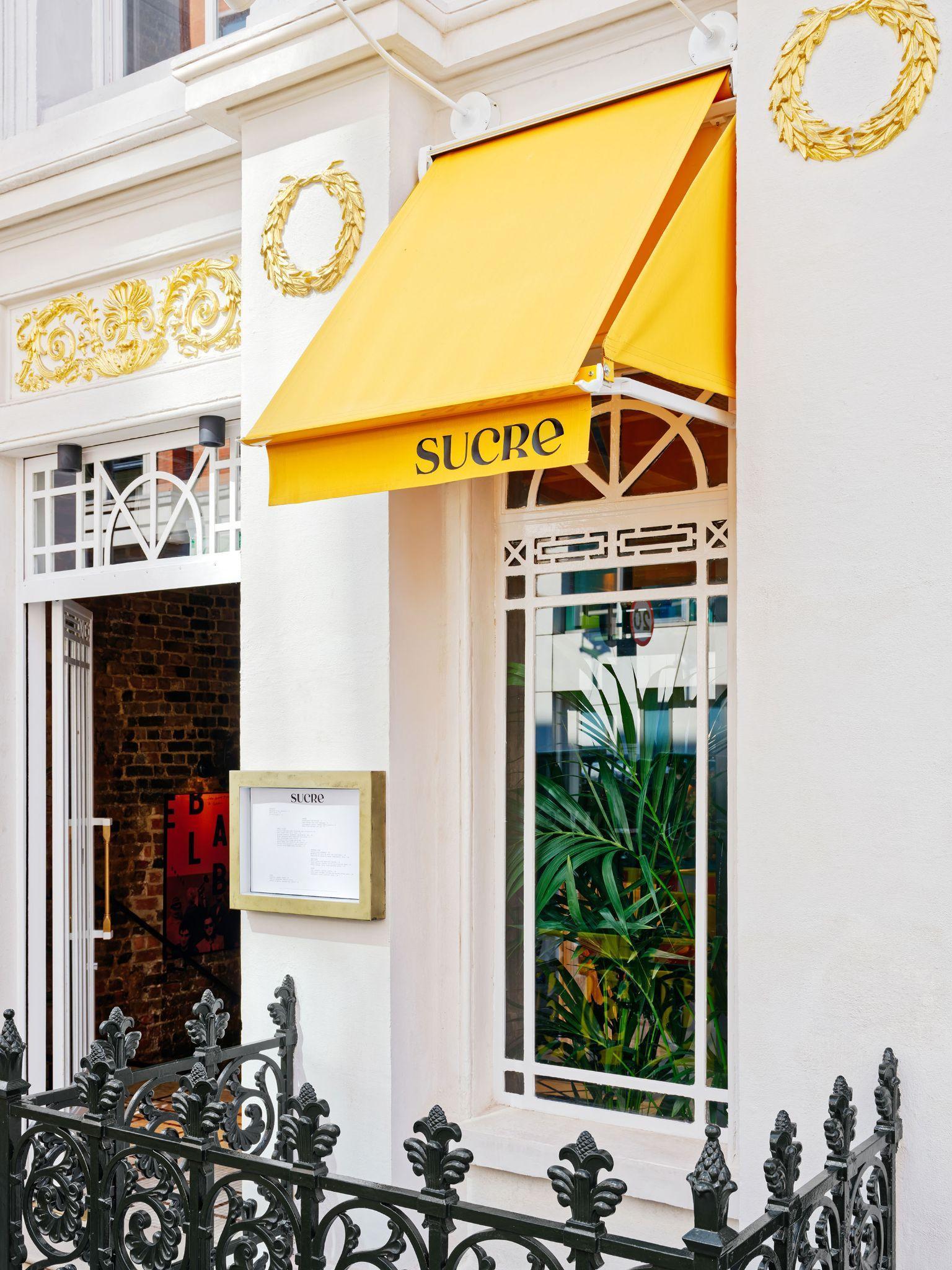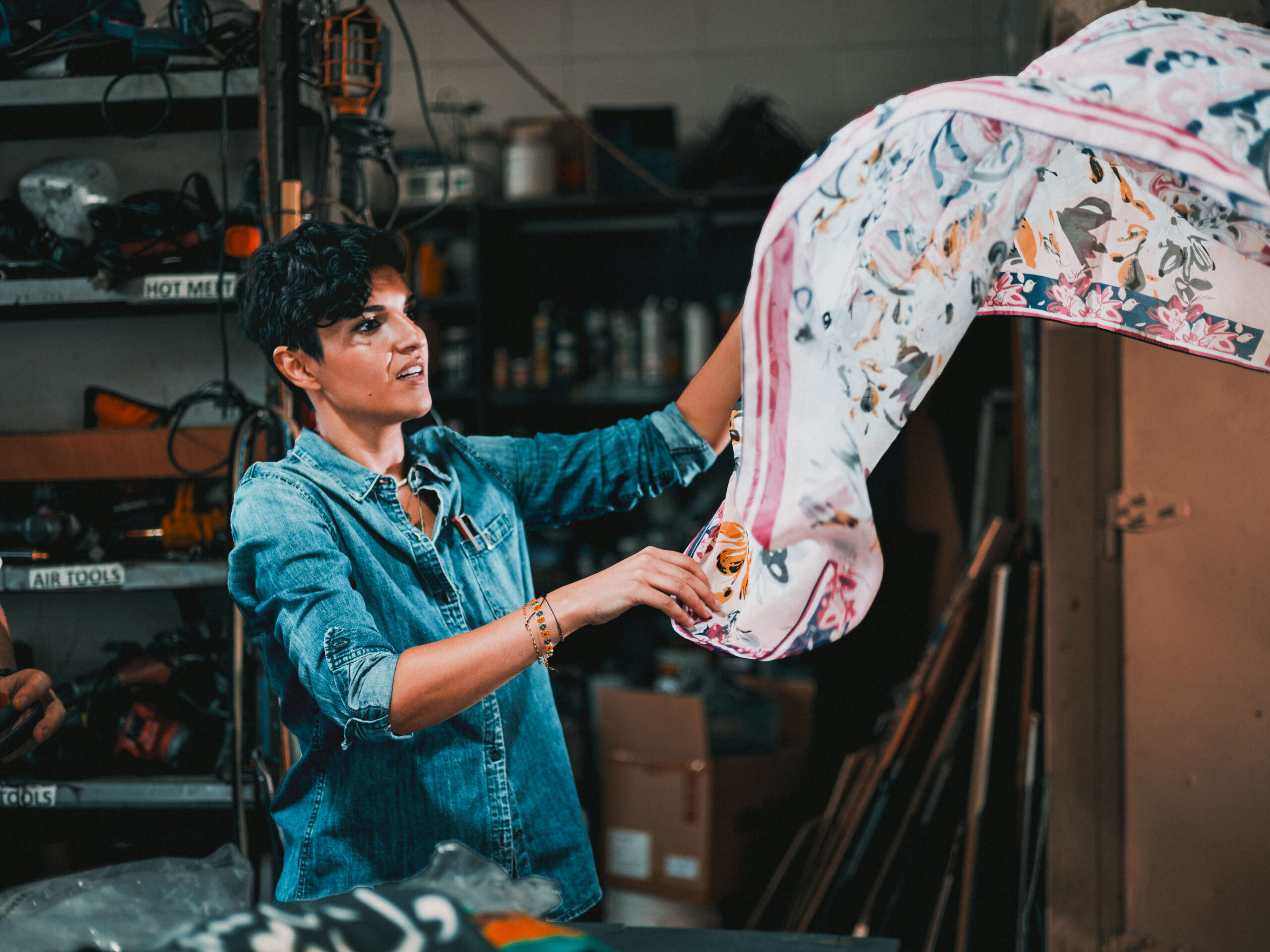
September 28, 2010
Yummy!
I thoroughly enjoyed the exhibition Appetite, curated by Alexander Tochilovsky at the Herb Lubalin Center at Cooper Union, not least because it was bite-sized. One room, lots of mouth-watering artifacts and a number of untold stories. My favorite: that black-and-white grocery sticker on almost every item you buy at the Met has a typeface, Hobo, designed in 1910.
Also appealing was the capsule history of package design, revealing of how trends change and how easily we fall into demographic traps. On one side, Milton Glaser’s pioneering packaging for Grand Union from the 1980s, a model of how to make a store brand pop while maintaining a serene genericity. Those grids withdraw from competition, awaiting your realization that there’s no reason to buy name-brand crushed tomatoes, toilet paper, butter. (I would have posted an image here, but I can’t find one online of the packaging. Container List, can you help me out?)
At the opposite end of the spectrum are the many upscaled goods redesigned by Louise Fili. Looking at her Late July crackers, I was sort of embarrassed for myself. Of course I found their old-tymey, cluttered aspect appealing, as people have since Classico upset the titans of spaghetti sauce, but they are still mass crackers masquerading as boutique. I should never have forsaken the Stoned Wheat Thins that seemed so classy to me as a child.

Antiquing a product label is the same process Rob Walker described in last Sunday’s NYT Consumed column, one product taking on the trade dress of another. He provides a concise analysis of why cloaking baby carrots as junk food only reinforces our prejudice toward salty, fatty snacks — and is unlikely to fool a teen. If Appetite had slightly more attitude it might question whether making chips look heritage doesn’t offer the same sleight of hand for the upper middle class.
Observed
View all
Observed
By Alexandra Lange
Related Posts

Business
Courtney L. McCluney, PhD|Essays
Rest as reparations: reimagining how we invest in Black women entrepreneurs

Design Impact
Seher Anand|Essays
Food branding without borders: chai, culture, and the politics of packaging

Graphic Design
Sarah Gephart|Essays
A new alphabet for a shared lived experience

Arts + Culture
Nila Rezaei|Essays
“Dear mother, I made us a seat”: a Mother’s Day tribute to the women of Iran
Recent Posts
Minefields and maternity leave: why I fight a system that shuts out women and caregivers Candace Parker & Michael C. Bush on Purpose, Leadership and Meeting the MomentCourtney L. McCluney, PhD|Essays
Rest as reparations: reimagining how we invest in Black women entrepreneurs Food branding without borders: chai, culture, and the politics of packagingRelated Posts

Business
Courtney L. McCluney, PhD|Essays
Rest as reparations: reimagining how we invest in Black women entrepreneurs

Design Impact
Seher Anand|Essays
Food branding without borders: chai, culture, and the politics of packaging

Graphic Design
Sarah Gephart|Essays
A new alphabet for a shared lived experience

Arts + Culture
Nila Rezaei|Essays

 Alexandra Lange is an architecture critic and author, and the 2025 Pulitzer Prize winner for Criticism, awarded for her work as a contributing writer for Bloomberg CityLab. She is currently the architecture critic for Curbed and has written extensively for Design Observer, Architect, New York Magazine, and The New York Times. Lange holds a PhD in 20th-century architecture history from New York University. Her writing often explores the intersection of architecture, urban planning, and design, with a focus on how the built environment shapes everyday life. She is also a recipient of the Steven Heller Prize for Cultural Commentary from AIGA, an honor she shares with Design Observer’s Editor-in-Chief,
Alexandra Lange is an architecture critic and author, and the 2025 Pulitzer Prize winner for Criticism, awarded for her work as a contributing writer for Bloomberg CityLab. She is currently the architecture critic for Curbed and has written extensively for Design Observer, Architect, New York Magazine, and The New York Times. Lange holds a PhD in 20th-century architecture history from New York University. Her writing often explores the intersection of architecture, urban planning, and design, with a focus on how the built environment shapes everyday life. She is also a recipient of the Steven Heller Prize for Cultural Commentary from AIGA, an honor she shares with Design Observer’s Editor-in-Chief,